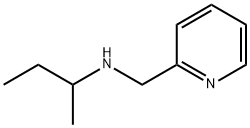1-(2-CHLOROPHENYL)-N-METHYL-N-(1-METHYLPROPYL)-3-ISOQUINOLINECARBOXAMIDE
Synonym(s):PK11195 - CAS 85532-75-8 - Calbiochem;TSPO Activator II, Mitochondrial Translocator Protein Activator II, PK 11195, PK-11195, PK11195
- CAS NO.:85532-75-8
- Empirical Formula: C21H21ClN2O
- Molecular Weight: 352.86
- MDL number: MFCD00069334
- SAFETY DATA SHEET (SDS)
- Update Date: 2024-11-12 15:22:20

What is 1-(2-CHLOROPHENYL)-N-METHYL-N-(1-METHYLPROPYL)-3-ISOQUINOLINECARBOXAMIDE?
Description
PK-11195 (85532-75-8) is a selective and potent peripheral benzodiazepine receptor, PBR (or TSPO, translocator protein) antagonist.1,2 It has been shown to chemosensitize tumor cells to a variety of chemotherapeutic agents via PBR-independent pathways.3,4 PK-11195 is also able to induce apoptosis in a variety of cell lines.5-7
The Uses of 1-(2-CHLOROPHENYL)-N-METHYL-N-(1-METHYLPROPYL)-3-ISOQUINOLINECARBOXAMIDE
PK 11195 is a high affinity peripheral benzodiazepine receptor (PBR) ligand. PK 11195 has been shown to regulate protein phosphorylation in rat brain mitochondria under control of Ca2+. PK11195 promot es mitochondrial apoptosis and blocks P-glycoprotein (Pgp)-mediated drug efflux to chemosensitize cancer cells.
The Uses of 1-(2-CHLOROPHENYL)-N-METHYL-N-(1-METHYLPROPYL)-3-ISOQUINOLINECARBOXAMIDE
PK 11195 is a high affinity peripheral benzodiazepine receptor (PBR) ligand. PK 11195 has been shown to regulate protein phosphorylation in rat brain mitochondria under control of Ca2+. PK11195 promotes mitochondrial apoptosis and blocks P-glycoprotein (Pgp)-mediated drug efflux to chemosensitize cancer cells.
What are the applications of Application
PK 11195 is a peripheral benzodiazepine antagonist
Definition
ChEBI: A monocarboxylic acid amide obtained by formal condensation of the carboxy group of 1-(2-chlorophenyl)isoquinoline-3-carboxylic acid with the amino group of sec-butylmethylamine
Biological Activity
Possesses high affinity for the MDR (peripheral benzodiazepine receptor) without binding to other known neurotransmitter receptors.
Biochem/physiol Actions
PK 11195 is a peripheral benzodiazepine antagonist. It is also an antagonist for human constitutive androstane receptor (hCAR) and human pregnane X receptor (PXR). In human primary hepatocytes, PK 11195 upon demethylation elicits agonist functionality towards the receptor hCAR. PK 11195 also antagonise B-cell lymphoma 2 (Bcl-2) and may serve as a potential compound for mitochondrial targeting therapies and in the treatment of cholangiocarcinoma.
storage
Room temperature
References
1) Le Fur, et al.; (1983) Peripheral benzodiazepine binding sites: effect of PK 11195, 1-(2-chlorophenyl)-N-methyl-N-(1-methylpropyl)-3-isoquinolinecarboxamide. I. In vitro studies; Life Sci., 32 1839 2) Le Fur et al.; (1983) Peripheral benzodiazepine binding sites: effect of PK 11195, 1-(2-chlorophenyl)-N-methyl-N-(1-methylpropyl)-3-isoquinolinecarboxamide. II. In vivo studies; Life Sci., 32 1849 3) Gonzalez-Polo et al. (2005) PK11195 potently sensitizes to apoptosis induction independently from the peripheral benzodiazepine receptor; Oncogene, 24 7503 4) Walter et al. (2005) PK11195, a peripheral benzodiazepine receptor (pBR) ligand, broadly blocks drug efflux to chemosensitize leukemia and myeloma cells by a pBR-independent, direct transporter-modulating mechanism; Blood, 106 3584 5) Chelli et al. (2004) Peripheral benzodiazepine receptor ligands:mitochondrial transmembrane potential depolarization and apoptosis induction in rat C6 glioma cells; Biochem. Pharmacol., 68 125 6) Sutter et al. (2004) Peripheral benzodiazepine receptor ligands induce apoptosis and cell cycle arrest in human hepatocellular carcinoma cells and enhance chemosensitivity to paclitaxel, docetaxel, doxorubicin and the Bcl-2-inhibitor HA14-1; J. Hepatol., 120 1212 7) Maaser et al. (2001) Specific ligands of the peripheral benzodiazepine receptor induce apoptosis and cell cycle arrest in human colorectal cancer cells; Br. J. Cancer, 85 1771
Properties of 1-(2-CHLOROPHENYL)-N-METHYL-N-(1-METHYLPROPYL)-3-ISOQUINOLINECARBOXAMIDE
| Boiling point: | 511.7±45.0 °C(Predicted) |
| Density | 1.179±0.06 g/cm3(Predicted) |
| storage temp. | Store at RT |
| solubility | Soluble in DMSO (up to 25 mg/ml) or in Ethanol (up to 15 mg/ml). |
| form | White crystalline powder. |
| pka | 1.76±0.50(Predicted) |
| color | White |
| Stability: | Stable for 1 year from date of purchase as supplied. Solutions in DMSO may be stored under nitrogen or argon at -20° for up to 1 month. |
| CAS DataBase Reference | 85532-75-8(CAS DataBase Reference) |
Safety information for 1-(2-CHLOROPHENYL)-N-METHYL-N-(1-METHYLPROPYL)-3-ISOQUINOLINECARBOXAMIDE
Computed Descriptors for 1-(2-CHLOROPHENYL)-N-METHYL-N-(1-METHYLPROPYL)-3-ISOQUINOLINECARBOXAMIDE
New Products
Tert-butyl bis(2-chloroethyl)carbamate 4-Methylphenylacetic acid N-Boc-D-alaninol N-BOC-D/L-ALANINOL N-octanoyl benzotriazole 3-Morpholino-1-(4-nitrophenyl)-5,6-dihydropyridin- 2(1H)-one Furan-2,5-Dicarboxylic Acid DIETHYL AMINOMALONATE HYDROCHLORIDE 1,1’-CARBONYLDIIMIDAZOLE R-2-BENZYLOXY PROPIONIC ACID 1,1’-CARBONYLDI (1,2-4 TRIAZOLE) N-METHYL INDAZOLE-3-CARBOXYLIC ACID (2-Hydroxyphenyl)acetonitrile 4-Bromopyrazole 5-BROMO-2CYANO PYRIDINE 5,6-Dimethoxyindanone 5-broMo-2-chloro-N-cyclopentylpyriMidin-4-aMine 2-(Cyanocyclohexyl)acetic acid 4-methoxy-3,5-dinitropyridine 1-(4-(aminomethyl)benzyl)urea hydrochloride 2-aminopropyl benzoate hydrochloride diethyl 2-(2-((tertbutoxycarbonyl)amino) ethyl)malonate tert-butyl 4- (ureidomethyl)benzylcarbamate Ethyl-2-chloro((4-methoxyphenyl)hydrazono)acetateRelated products of tetrahydrofuran




![PK11195, [N-METHYL-3H]-](https://img.chemicalbook.in/StructureFile/ChemBookStructure2/GIF/CB3362853.gif)



You may like
-
 PK 11195 CAS 85532-75-8View Details
PK 11195 CAS 85532-75-8View Details
85532-75-8 -
 PK11195 CAS 85532-75-8View Details
PK11195 CAS 85532-75-8View Details
85532-75-8 -
 1975-50-4 98%View Details
1975-50-4 98%View Details
1975-50-4 -
 2-HYDROXY BENZYL ALCOHOL 98%View Details
2-HYDROXY BENZYL ALCOHOL 98%View Details
90-01-7 -
 2-Chloro-1,3-Bis(Dimethylamino)Trimethinium Hexafluorophosphate 221615-75-4 98%View Details
2-Chloro-1,3-Bis(Dimethylamino)Trimethinium Hexafluorophosphate 221615-75-4 98%View Details
221615-75-4 -
 14714-50-2 (2-Hydroxyphenyl)acetonitrile 98+View Details
14714-50-2 (2-Hydroxyphenyl)acetonitrile 98+View Details
14714-50-2 -
 118753-70-1 98+View Details
118753-70-1 98+View Details
118753-70-1 -
 733039-20-8 5-broMo-2-chloro-N-cyclopentylpyriMidin-4-aMine 98+View Details
733039-20-8 5-broMo-2-chloro-N-cyclopentylpyriMidin-4-aMine 98+View Details
733039-20-8